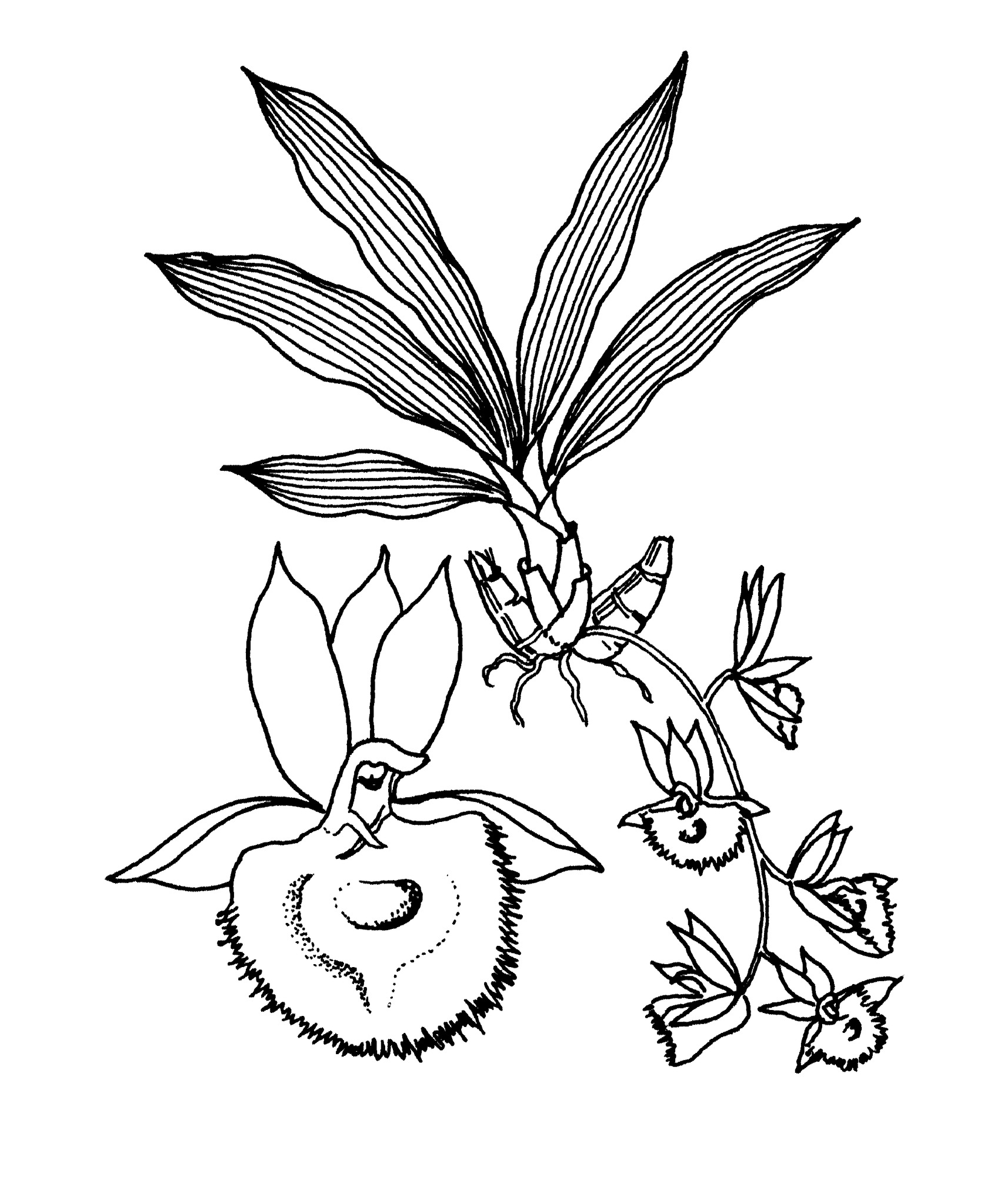
Greek cata – downwards; seta – bristle; the male flowers bear a downcurved antennae-like appendage at the base of the column.
Epiphytic, epilithic or terrestrial HERBS, sympodial, with short creeping rhizomes and numerous secondary roots. STEMS thickened into ovoid to cylindrical pseudobulbs, sheathed. LEAVES lateral, in 2 ranks, folded, deciduous, bases persistent. INFLORESCENCES lateral racemes, erect or pendent. FLOWERS usually non-resupinate, few-many, small to large, usually unisexual with males and females appearing mostly on separate racemes, variously coloured. SEPALS similar, free, spreading or curved backwards. PETALS similar to sepals, free. LABELLUM entire, toothed or fringed, fleshy, often pouched. MALE FLOWERS numerous. COLUMN with 2 antennae-like appendages at base which, when touched, release the pollinia explosively. POLLINIA 2 or 4, waxy. FEMALE FLOWERS few. COLUMN short, without anther or appendages.
About 70 species from the West Indies, C and S America.
The presence of male and female flowers usually on separate inflorescences.
Holst (1999).
Source: (2005). Orchidaceae. In: . Horticultural Flora of South-eastern Australia. Volume 5. Flowering plants. Monocotyledons. The identification of garden and cultivated plants. University of New South Wales Press.
